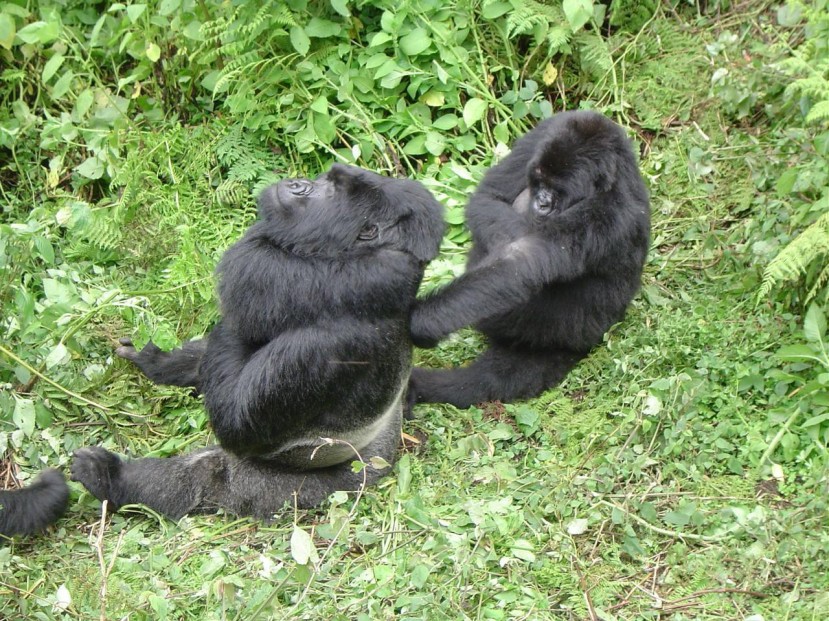
A Silverback Mountain Gorilla with a female pictured in Virunga National Park, Rwanda. Photo credit: Patrick Cyusa via Wikimedia.
By Anders Lorenzen
Despite facing the threats of climate change, poaching and political instability a huge success story has emerged for the critically endangered mountain gorilla population.
The species, residing lives in the forest-cloaked volcanoes of central African is still rated as critically endangered but had at the most recent count increased its population to 1,004, up over a quarter from 2010’s count of 786.
Across the gorilla conservation society, there is jubilation over this new count with Mike Cranfield from the charity Gorilla Doctors stating “These numbers are truly remarkable, far exceeding our expectations, and are the result of a collaborative, three-country effort with governments and partners all playing an important role.”
The results are even more impressive considering that the Eastern Gorilla subspecies is facing threats posed by poachers and armed groups in the Virunga Massif, a spine of volcanic mountains in the western Rift Valley straddling eastern Democratic Republic of Congo, Uganda and Rwanda, where most of the Gorillas inhabit. And on top of this, the climate-sensitive region Congo has also invited oil companies to start drilling in Virunga, Africa’s largest tropical rainforest reserve, which conservationists worry will put the environment in greater danger. And if you want proof of the instability of the region one only has to look towards the recent kidnapping of two Britons by an armed militia, which has severely impacted tourism with rangers banning tourists this month from entering the park during the investigations. Eco-tourism is crucial to help fund conservation efforts in the region.
While mountain gorillas possess several traits that make them resistant to a changing climate there is worry about other traits that make them more vulnerable, such as their relatively low population, low reproductive rate, their vulnerability to diseases which can be transmitted from humans to the gorilla. One of the risks of climate change is the spread of diseases and viruses which are more easily transferred in a globalised warmer world, seen with the outbreak of the Ebola virus. Then there’s the obvious one of habitat destruction and poaching as well as commercial activity which the mountain gorilla is especially vulnerable to.
Margaret Kinnaird from the global conservation charity World Wildlife Fund ((WWF) said about the increase in the mountain gorilla population: “This is fabulous news for mountain gorillas and shows what we can do for wildlife when NGOs, governments and their communities work together. However, the high number of snares encountered and the numerous other threats they face including climate change indicate that the battle is far from won. The three gorilla range countries and their partners must continue to work together to safeguard the Virunga Massif. The mountain gorilla story can be a model for how to restore and maintain our earth’s precious biodiversity.”
The mountain gorilla has never maintained high populations due to the small geographical extent of its habitat. But due to its remote location, only in recent times has it been possible to start collecting accurate data on mountain gorilla populations.
Categories: Africa, conservation
5 replies »